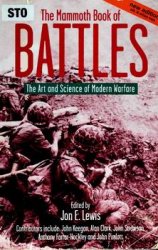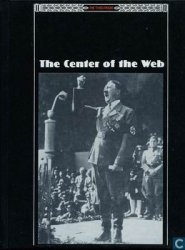Bresson’s reputation rests upon a comparatively small body of work. After his first two significant films, Les Anges du peche (1943) and Les Dames du Bois du Boulogne (1945; p. 300), he made only eleven films in forty years, most notably Diary of a Country Priest (1951), A Man Escaped (1956), Pickpocket (1959), Au Hasard Balthasar (“At Random Balthasar,” 1966), Mouchette (1967), Four Nights of a Dreamer (1972),
Lancelot du Lac (Lancelot of the Lake, 1974), and L’Argent (“Money,” 1983). Yet, from the early 1950s on, Bresson was one of the most respected directors in the world. Championed by the Cahiers critics, praised by Sarris and the Movie group, his rigorous, demanding films display an internal consistency and a stubbornly individualistic vision of the world.
Bresson’s reliance on literary texts gave him some credibility in the period when the Cinema of Quality reigned. His films are often structured around letters, diaries, historical records, and voice-over retellings of the action. Yet there is nothing particularly literary about the finished product. His work perfectly exemplifies As-truc’s camera-stylo aesthetic: he took literary works as pretexts, but he composed by purely filmic means. Bresson was fond of contrasting what he called “cinematography”—“writing through cinema”—with “cinema,” or the ordinary filmmaking that is, he insisted, merely photographed theater.9
Bresson concentrated on sensitive people struggling to survive in a hostile world. His two 1940s features weave vengeful intrigues around innocent victims. With Diary ofa Country Priest and on through the early 1960s, a long second phase emerged in his work. The films presented austere images and subdued acting. In most of these works, suffering is redeemed to one degree or another: the country priest dies with the realization “ All is grace”; in A Man Escaped, Fontaine breaks out of a Nazi prison by trusting in his cellmate; after a fascination with crime, the pickpocket learns to accept a woman’s love. Bresson’s interest in religious subjects struck a strong chord during the revival of Catholicism in postwar France. During this phase, he gained his international reputation as the great religious director of postwar cinema.
After the mid-1960s, his films became far more pessimistic. Viewers who had identified Bresson as a “Catholic” director were puzzled by his turn to the secular, even sexual, problems of young people in modern society. Now his protagonists are led to despair and even suicide. In Balthasar, Marie dies after a juvenile gang has stripped and beaten her. Mouchette and the protagonists of Une Femme douce (“A Gentle Woman,” 1969) and The Devil Probably (1977) kill themselves. In L’Argent, an unjust accident hurls a young man in and out of prison and toward unreasoning murder. Now Christian values offer no solace: the quest for the Grail in Lancelot du Lac fails; chivalry becomes a heap of bloodied armor.
However bleak they may be, Bresson’s films radiate mystery. It is difficult to understand his characters because they are typically examined from the outside. The performers—Bresson called them his “models”—are often nonactors or amateurs. They are preternaturally still and quiet, breaking their silence with a clipped word or a brief gesture. In this cinema, a sudden raising of the eyes becomes a significant event: a shared look, a climax. The models are often filmed from behind, or in close-ups that fragment their bodies (19.40). In addition, Bresson’s abrupt cutting, short scenes, bright track-ins or track-

19.40 Pickpocket: Michel’s hand seems almost cut free from his arm as it moves freely into purses and pockets.
Outs, and laconic sound tracks demand the viewer’s utmost concentration. The reward is a markable balance between a penetration of the characters’ experiences and a sense that their inner states remain elusive and mysterious, as in a scene from Diary of a Country Priest, when the protagonist discovers information about the author of a cruel anonymous letter to him (19.41-19.46).

19.41 Diary of a Country Priest: as the priest walks into the church, he picks up a fallen prayerbook and discovers that the inscription is in the same handwriting as a cruel anonymous letter he has received. We make the discovery with him and share his curiosity to learn who has been persecuting him. But then we hear a door opening. He quickly puts the book in front of a pew and walks out of the frame.

19.42 Bresson holds on the book for eleven seconds, tracking in as the offscreen steps approach.
19.43 The suspense is resolved when the governess from the manor house comes into medium shot, kneels, and opens the book.

19.44 She looks up.
19.45 Bresson cuts to a medium-close shot of the priest walking into the chapel and looking briefly at her...
19.46 ... before he makes his way to
The altar, eyes lowered. As he kneels, the scene fades out. Her motivations, and his reactions, have been suppressed.

19.47, 19.48 Oblique eyeline matches in Four Nights of a Dreamer: “To set up a film is to bind persons to each other and to objects by looks.”

19.49, left Most directors would show Mouchette going to school by establishing the locale with a long shot and then cutting in to a direct view of her walking along the street and joining her schoolmates. Instead, Bresson starts with a downward angle on the children’s feet...
19.50, right. . . lets Mouchette come in, her back to us...

19.51, left follow her.
19.52, right. . . and then stops before the school gate. The effect is to cut characters free of locale for a brief moment, suspending our knowledge of where they are in order to concentrate on their physical behavior.
, tracks a short way to
After Diary of a Country Priest, Bresson began to avoid long shots. He typically created a scene’s space by showing small portions of it and linking shots through characters’ eyelines (19.47, 19.48). At other times his tightly framed camera movements suggest action by concentrating on details. In one scene from Mouchette, for instance, by showing no faces, Bresson calls attention to Mouchette’s discouraged gait and her shabby clothes (19.49-19.52).
Bresson also needs no long shot of Mouchette’s school because he has evoked the setting through the sounds of the school bell and the students’ chatter. “Every time that I can replace an image by a sound I do so.”l0 Against a background of pervasive silence, every object in a Bresson film takes on a distinct acoustic flavor: the scrape of the bedstead in Fontaine’s cell, the clank of the knights’ armor in Lancelat du Lac, the rusty bray of the donkey Balthasar. Offscreen sound will establish a locale or will provide a motif that recalls other scenes. Bresson’s intense concentration on physical details and isolated sounds often fills in for psychological analysis. The mystery and ambiguity of Bresson’s style proved suited to his treatment of solitary individuals who struggle to survive a spiritual or physical ordeal.
These enigmatic gestures, textures, and details are presented in a highly sensuous way. Bresson’s images may be severe, but they are never drab. In Les Anges du peche, the nuns’ habits create an angular geometry and lustrous range of tonalities (see 13.45). His color films achieve vivid effects by minute means: a knight’s armor stands out slightly by its sheen; a mail basket in a prison office becomes a vibrant blue (Color Plates 19.5, 19.6).
Bresson moved toward abbreviated, elliptical storytelling. From Pickpocket on, and especially in Au Hasard Balthasar, so much is left to the spectator’s imagination that the very story events—“what happens”—become almost opaque. (“I never explain anything, as it is done in the theatre.” II) What gives the Bresson film a sense of ongoing structure are the subtly varied, almost ceremonial repetitions—daily routines, replayed confrontations, returns to the same locales. The spectator suspects, as the individuals involved do not, that the apparently random action is part of a vast cycle of events governed by God, fate, or some other unknown force.

19.53-19.55 Jour de fete: the camera arcs around the farmer to keep Francois in the background as a persistent bee plagues them both.
Bresson never sought the commercial success enjoyed by Antonioni, Bergman, and Fellini. Yet he influenced filmmakers as varied as Jean-Marie Straub (who saw political implications in ascetic images and direct sound) and Paul Schrader (whose American Gigolo reworks Pickpocket). Although Bresson never made his long-cherished version of the biblical book of Genesis, he remains one of the most distinctive auteurs of the past fifty years.




 World History
World History









